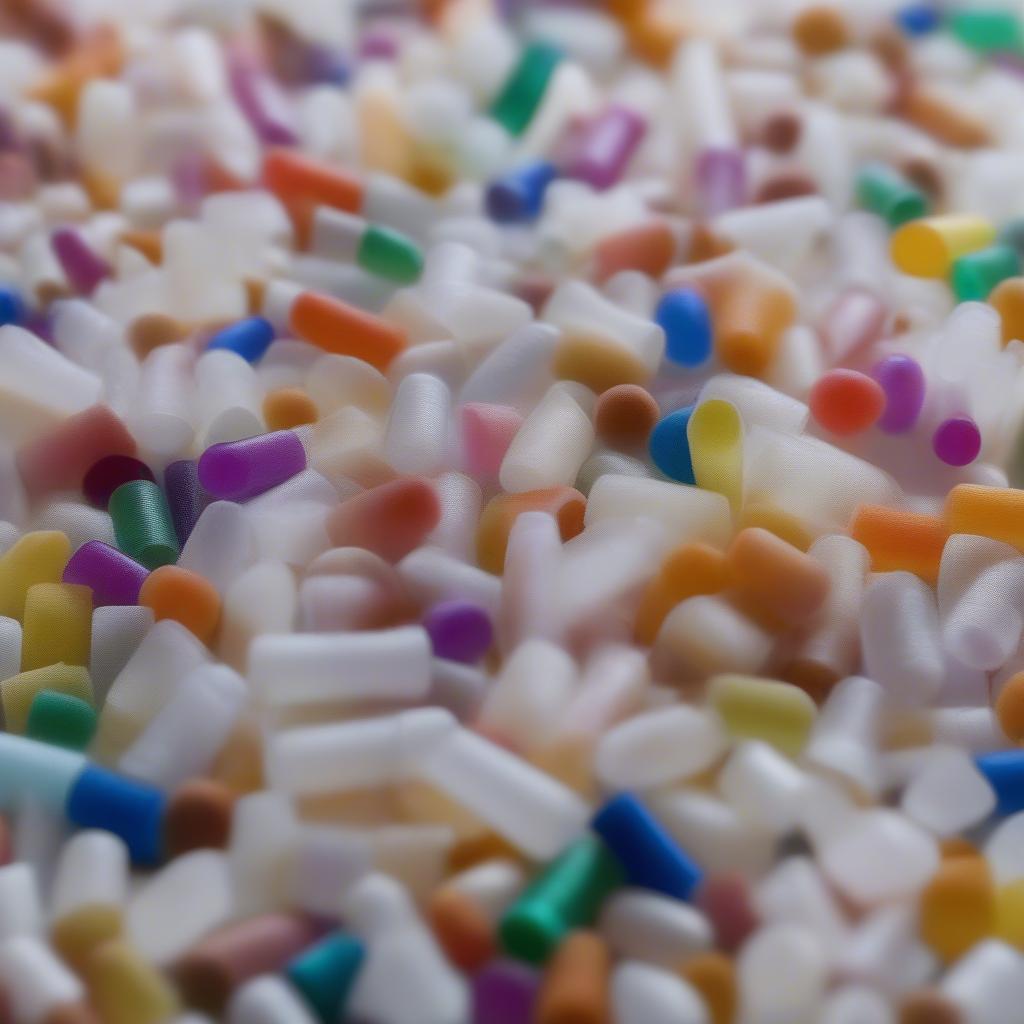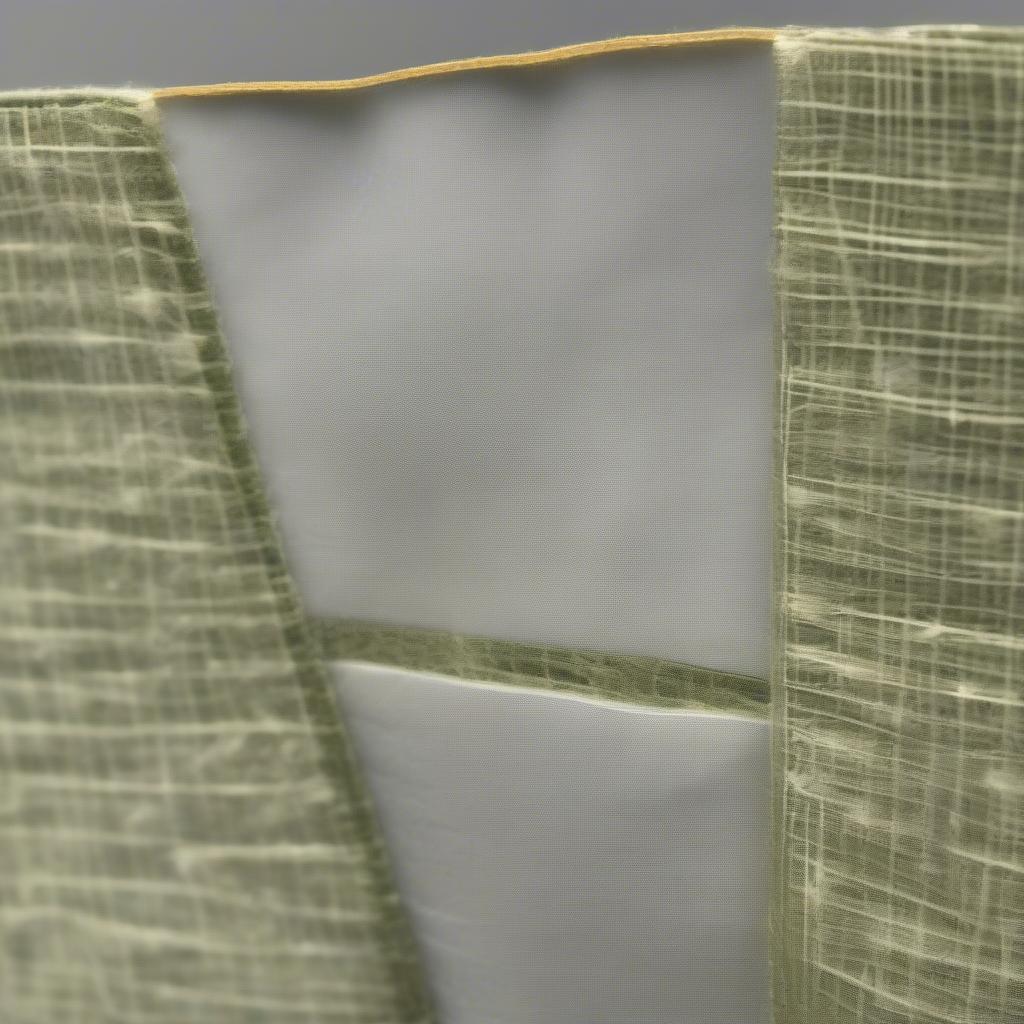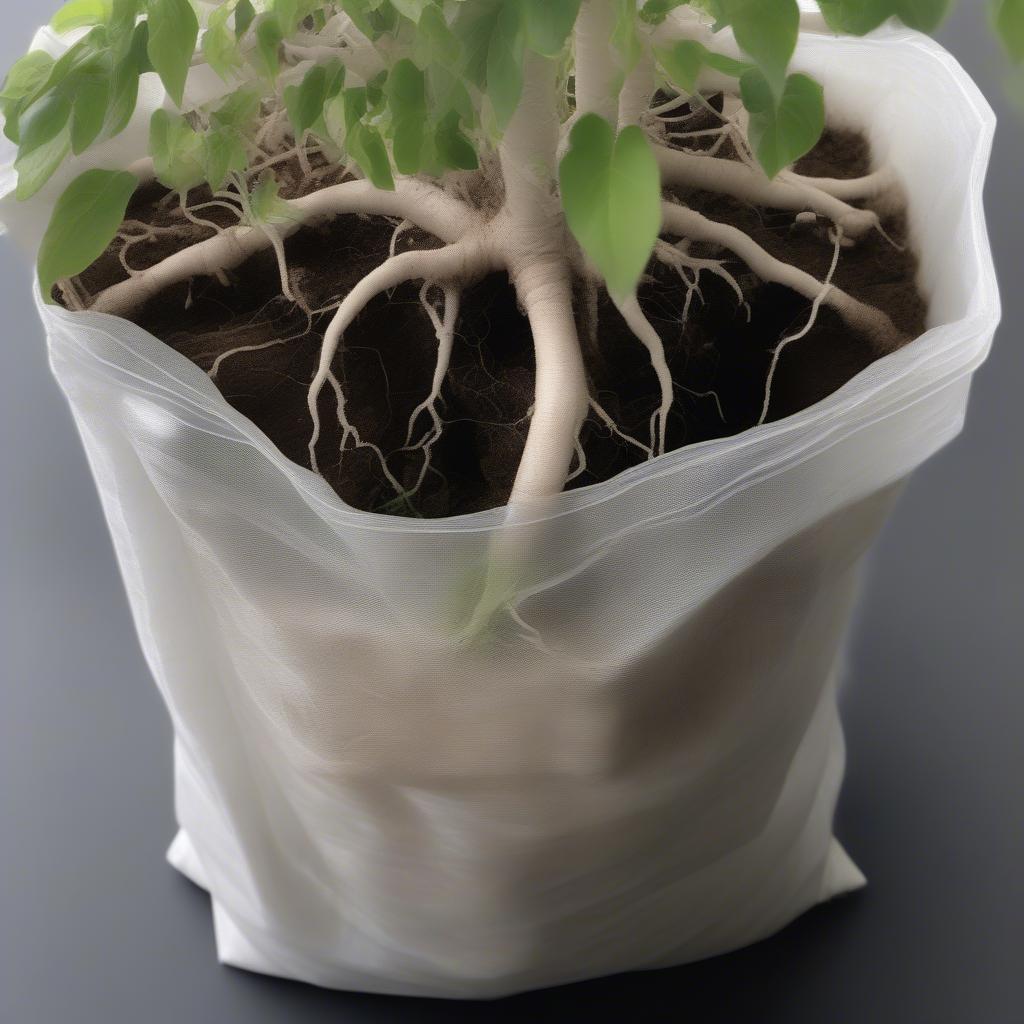Woven Bag
What Are Most Non-Woven Grow Bags Made Of?
Non-woven grow bags have become increasingly popular for home gardeners and commercial growers alike. But what are most non-woven grow bags made of? Understanding the materials used in these bags is crucial for selecting the right one for your plants’ needs.
Decoding the Fabric of Non-Woven Grow Bags
Non-woven grow bags are typically made from polypropylene (PP) or polyethylene (PE). These synthetic polymers offer a blend of durability and breathability that benefits plant growth.  Polypropylene and Polyethylene pellets, the raw materials for non-woven grow bags. Polypropylene is more common due to its higher strength and resistance to tearing. It also offers excellent drainage and aeration. Polyethylene is a lighter, less expensive option but may not be as durable. Some bags also use a blend of both materials to achieve optimal properties. Knowing what are most non-woven grow bags made of will help you make an informed purchase.
Polypropylene and Polyethylene pellets, the raw materials for non-woven grow bags. Polypropylene is more common due to its higher strength and resistance to tearing. It also offers excellent drainage and aeration. Polyethylene is a lighter, less expensive option but may not be as durable. Some bags also use a blend of both materials to achieve optimal properties. Knowing what are most non-woven grow bags made of will help you make an informed purchase.
Exploring the Benefits of Polypropylene and Polyethylene
Both polypropylene and polyethylene offer significant advantages for plant growth:
- Breathability: The porous nature of these materials allows for excellent air circulation around plant roots, promoting healthy development. This prevents root rot, a common issue with traditional plastic pots.
- Drainage: Excess water can easily drain through the fabric, preventing waterlogging and ensuring optimal moisture levels for the plants.
- Durability: These materials are resistant to tearing, UV damage, and general wear and tear, making them a long-lasting option for growing.
- Lightweight: Non-woven grow bags are much lighter than traditional pots, making them easier to move and handle.
- Cost-Effective: Compared to other grow bag options, non-woven bags offer an economical solution, especially for large-scale growing operations.
Other Materials in Non-Woven Grow Bags
While polypropylene and polyethylene form the main components, some non-woven grow bags may incorporate other materials to enhance specific properties:
- Recycled Materials: Some manufacturers use recycled plastic to create more sustainable grow bags. recycled plastic woven tote bags This helps reduce environmental impact.
- UV Stabilizers: Additives that protect the fabric from UV degradation, increasing the lifespan of the bag.
- Colorants: Dyes are sometimes added to achieve specific colors, which can have aesthetic benefits or even help regulate root temperature.
 Cross-section of a non-woven grow bag, showing the fibrous structure and stitching.
Cross-section of a non-woven grow bag, showing the fibrous structure and stitching.
Choosing the Right Non-Woven Grow Bag
When selecting a non-woven grow bag, consider the following factors:
- Plant Type: Different plants have different needs. Larger plants require larger bags with greater durability.
- Material: Choose between polypropylene and polyethylene based on your budget and desired durability.
- Size and Shape: Select a size and shape that fits your space and the plant’s growth habits.
- Features: Look for features like handles, drainage holes, and UV protection.
“Understanding the materials used in your grow bags is crucial for maximizing plant health and yield,” says horticulturalist Dr. Emily Carter. “Choosing the right material can significantly impact the root development and overall success of your garden.”
Why are non-woven bags better than plastic pots?
Non-woven grow bags offer better aeration and drainage than traditional plastic pots, promoting healthier root systems. They also allow for “air pruning,” where the roots stop growing when they reach the edge of the bag, preventing circling and promoting a denser, more fibrous root system. advantages of non woven bags This leads to stronger, more productive plants.
 Healthy plant roots growing in a non-woven grow bag.
Healthy plant roots growing in a non-woven grow bag.
Conclusion
So, what are most non-woven grow bags made of? Primarily polypropylene and polyethylene, these durable and breathable materials create an ideal environment for plant growth. By understanding the composition and benefits of these materials, you can choose the perfect non-woven grow bag for your gardening needs. non-woven-tote-bags-eros Choosing the right bag will contribute to the health and success of your plants.
FAQ
- Are non-woven grow bags reusable? Yes, they are typically reusable for multiple growing seasons.
- How do I clean non-woven grow bags? Simply rinse them with water and let them air dry.
- Can I use non-woven grow bags indoors? Absolutely, they are suitable for both indoor and outdoor use.
- What size grow bag do I need? The size depends on the plant type and its mature size.
- Are non-woven grow bags biodegradable? While some are made with recycled materials, they are not generally biodegradable.
- What are the alternatives to non-woven grow bags? Fabric pots, plastic pots, and coco coir liners are some alternatives.
- Do non-woven grow bags prevent root circling? Yes, they promote air pruning, which prevents root circling.
Need support? Contact our 24/7 customer service team at +84 388 951 999, located in Hanoi, Vietnam, or Tech Avenue, Suite 12, San Francisco, CA 94105, USA.
